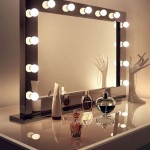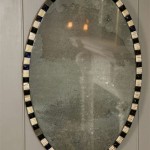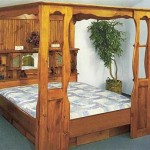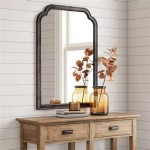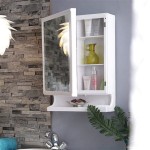Can You Make Glass Into A Mirror?
Turning plain glass into a mirror involves applying a reflective coating to one side. This process, while seemingly simple, requires precision and specific materials to achieve a clear, functional reflective surface. The core concept relies on creating a thin, even layer of a highly reflective material, effectively transforming the transparent glass into a mirror.
Historically, silvering was the dominant method for creating mirrors. This process involves applying a silver nitrate solution to the glass, which is then chemically reduced to deposit a thin layer of metallic silver. The silver layer adheres to the glass, creating the reflective surface. This traditional method, while effective, is delicate and requires meticulous care due to the reactivity of the silver. Furthermore, silver mirrors are susceptible to tarnishing over time due to oxidation, requiring protective coatings to maintain their reflectivity.
Modern mirror production predominantly utilizes aluminum as the reflective coating. This process, known as vacuum deposition, involves vaporizing aluminum in a vacuum chamber. The aluminum vapor then condenses onto the glass surface, forming a thin, uniform reflective layer. Aluminum offers several advantages over silver. It is significantly more resistant to oxidation, resulting in mirrors with a longer lifespan and less susceptibility to tarnishing. Furthermore, aluminum is more cost-effective than silver, making it the preferred choice for large-scale mirror production.
The vacuum deposition process is highly controlled to ensure the quality and uniformity of the reflective coating. The thickness of the aluminum layer is crucial; too thin, and the mirror may appear translucent or have reduced reflectivity. Too thick, and the aluminum layer may become brittle and prone to cracking. Precise control of the deposition parameters, such as temperature and pressure, is essential for achieving optimal results.
After the aluminum layer is deposited, it is typically protected by a layer of paint or a polymer coating. This protective layer shields the aluminum from environmental factors, further enhancing the mirror's durability and longevity. The backing also prevents scratching and damage to the delicate reflective surface. Different backing materials can be utilized depending on the intended application of the mirror. For instance, mirrors used in bathrooms often have moisture-resistant backings to prevent damage from humidity.
Beyond aluminum, other metals can be utilized for specialized mirror applications. For example, dielectric mirrors utilize multiple thin layers of non-conductive materials like zinc sulfide and magnesium fluoride. These layers are precisely designed to reflect specific wavelengths of light, creating highly reflective mirrors for specific applications, such as laser cavities or scientific instruments. Dielectric mirrors offer superior reflectivity compared to traditional metallic mirrors, particularly for specific wavelengths of light.
The quality of the glass substrate itself plays a significant role in the final mirror's performance. Imperfections or distortions in the glass will be reflected in the mirror image. Therefore, high-quality, float glass is typically used for mirror production. This type of glass is manufactured through a process that results in a very flat and uniform surface, ideal for creating distortion-free reflections.
Making a functional mirror requires more than just applying a reflective coating. The glass surface needs to be thoroughly cleaned and prepared prior to the coating process. Any dust, dirt, or grease on the glass can interfere with the adhesion of the reflective layer, resulting in imperfections or reduced reflectivity. Specialized cleaning solutions are often used to ensure the glass surface is pristine before the coating process begins.
While DIY mirror making kits are available, replicating the precision and quality of commercially produced mirrors can be challenging. These kits often use silvering solutions, which require careful handling and precise execution to achieve satisfactory results. The environmental conditions, such as temperature and humidity, can also significantly affect the outcome of the silvering process.
The transformation of glass into a mirror represents a fascinating intersection of science and manufacturing. The process has evolved significantly over time, moving from delicate silvering techniques to sophisticated vacuum deposition processes. The selection of the reflective coating, the precision of the application process, and the quality of the glass substrate all contribute to the final quality and performance of the mirror. The versatility of the process allows for the creation of mirrors tailored to a wide range of applications, from everyday household use to highly specialized scientific instruments.

How To Turn Ordinary Glass Into An Antique Mirror

How To Make A Mirror With Pictures Wikihow

How To Turn Ordinary Glass Into An Antique Mirror

Easy Ways To Make A One Sided Mirror With Pictures Wikihow

I 39 M Going To Show You Guys How Turn Real Glass Into A Mirror Are Need Effect Spray Paint Diy Projects

How To Quickly Turn Glass Mirror In 4 Steps Spray Paint Home Decor Ideas

How To Turn Ordinary Glass Into Looking Interior Frugalista

How To Turn Glass Into An Antique Mirror The Morris Mansion

How To Turn A Thrifted Picture Frame Into Mirror Sweet Southern Oaks

Turn A Window Into Mirror With Less Than 20 Earlyexperts

